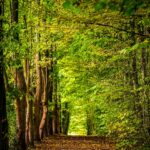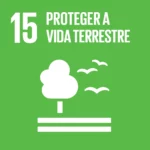
World Tree Day. 8 reforestation support programs
The International Day of Trees and Forests, which is celebrated on March 21, was implemented by the United Nations to mark the importance of large
We didn't find any happenings mapped to your criteria.
Try the traditional search to find articles not yet mapped with RUA.
We didn't find any happenings mapped to your criteria.
Try the traditional search to find articles not yet mapped with RUA.
We didn't find any happenings mapped to your criteria.
Try the traditional search to find articles not yet mapped with RUA.
We didn't find any happenings mapped to your criteria.
Try the traditional search to find articles not yet mapped with RUA.
Residents of Villa Botanis, in Chile, took part in a fire-fighting program, where they received tools and training to better prepare for an eventual future fire.
At the beginning of February, the Chilean coastal cities of Vina del Mar and Valparaíso were the scene of the worst South American disaster since 2010, when forest fires ravaged the area, destroying thousands of homes and causing at least 132 deaths.
However, despite being surrounded by fire, the Villa Botania neighborhood, located on top of a hill surrounded by scrubland and bushes, and made up of around 70 houses, was not affected. According to the residents and the authorities, the flames didn’t touch any of the houses and all the inhabitants managed to get out in time thanks to a community project aimed at reducing the damage caused by forest fires.
Speaking to EFE, the locals said that what many see as good fortune is the result of intense training and clean-up actions, the rational management of the territory’s vegetation and, above all, the commitment of a cohesive community with well-defined roles in a model that can be applied to the rest of Chile and expanded to the rest of the world.
Villa Botania is one of several communities involved in a fire-fighting program financed by the US organization USAID, together with the National Forestry Corporation (Conaf) and Caritas Chile, as Rodrigo Vargas, a neighbor and coordinator of the program in the Villa Botania neighborhood, told EFE.
The city of Quilpué, where Botania is located, had identified the neighborhood as one of the most vulnerable communities and its residents quickly agreed to join this pilot project as a way to start preparing for the next fire. In this regard, Chilean forest officials produced a risk report to determine the greatest fire hazards and guided residents on how to deal with them.
Before the flames approached, the community joined forces and cleared a wide path around the community, removing all debris to create a firebreak, participated in weekly planning sessions and set up a command center equipped with an electric generator and walkie-talkies. Besides, residents regularly cleared the surrounding area of all potentially flammable materials, cutting down trees, pruning and picking up garbage around the houses, and learned to use water sprays to drench the ground and slow down the advance of the flames.
In addition to the training, the member communities also received a toolkit, along with other resources that each community managed according to its reality.
Despite the participation of the Villa Botania neighborhood, 250 houses in the area (at Canal Chacao) were affected by the fire, almost all of them adjoining private land where the owners resisted pruning the vegetation.
Irregular settlements – the illegal camping area – were intentionally left out of the project, since they are a “complex reality”. “They are almost all in risk areas, prone to fires, floods and mass removal, places where no regulated construction would be possible, making it very complex to establish adequate prevention plans,” explained the mayor of Quilpué, Valeria Melipillán, to the Washington Post.
According to the same newspaper, a USAID spokesman said that the organization wants to extend the programme to include these more vulnerable communities. “Although informal settlements were not included in the first phase of this program, talks are underway on how to incorporate other at-risk communities in future phases.”
The authorities believe that this month’s fires were set intentionally. Scientists say that a volatile combination of drought, climate change and El Niño has accelerated its spread. In the last decade, three times more land has burned in Chile than in the previous decade, according to a study published in Scientific Reports magazine.


The International Day of Trees and Forests, which is celebrated on March 21, was implemented by the United Nations to mark the importance of large

The afforestation method accelerates their growth and helps in the resilience of cities to climate change. A mini forest is being created at Casal Vistoso

We know that, just like us, there are hundreds of other projects wanting to do more for the planet. We went to find out more

This article addresses an action that promotes the protection, restoration and sustainable use of terrestrial ecosystems, sustainably manage forests, combat desertification, droughts and floods, halt and reverse land degradation, and halt biodiversity loss.
 To discover businesses that are actively working to contribute to this Sustainable Development Goal, click here.
To discover businesses that are actively working to contribute to this Sustainable Development Goal, click here. To read news, interviews, or tips related to this Goal, click here.
To read news, interviews, or tips related to this Goal, click here. Want to know more about the 17 United Nations Sustainable Development Goals? Click here
Want to know more about the 17 United Nations Sustainable Development Goals? Click hereEsta publicação também está disponível em:
![]() Português (Portuguese (Portugal))
Português (Portuguese (Portugal))

